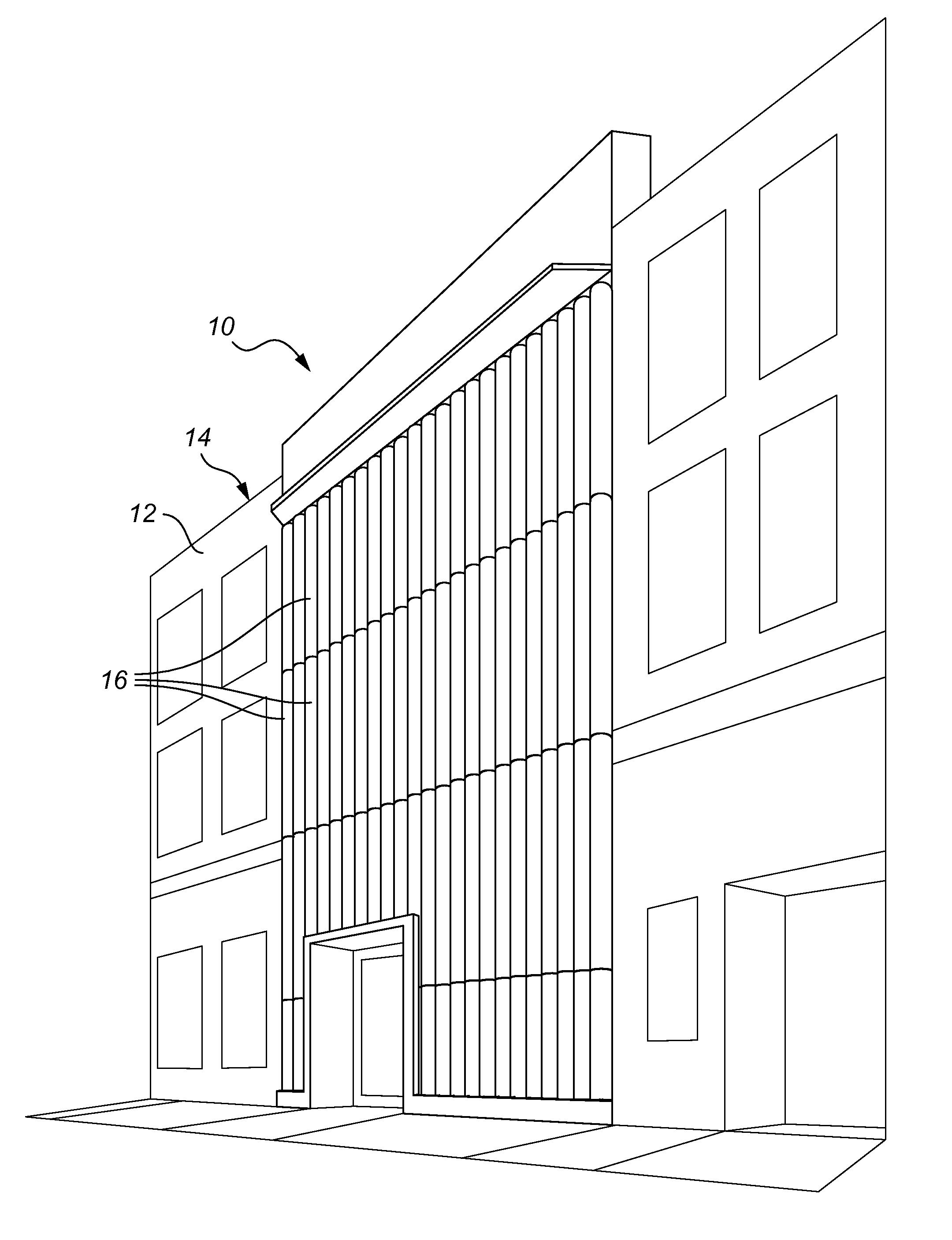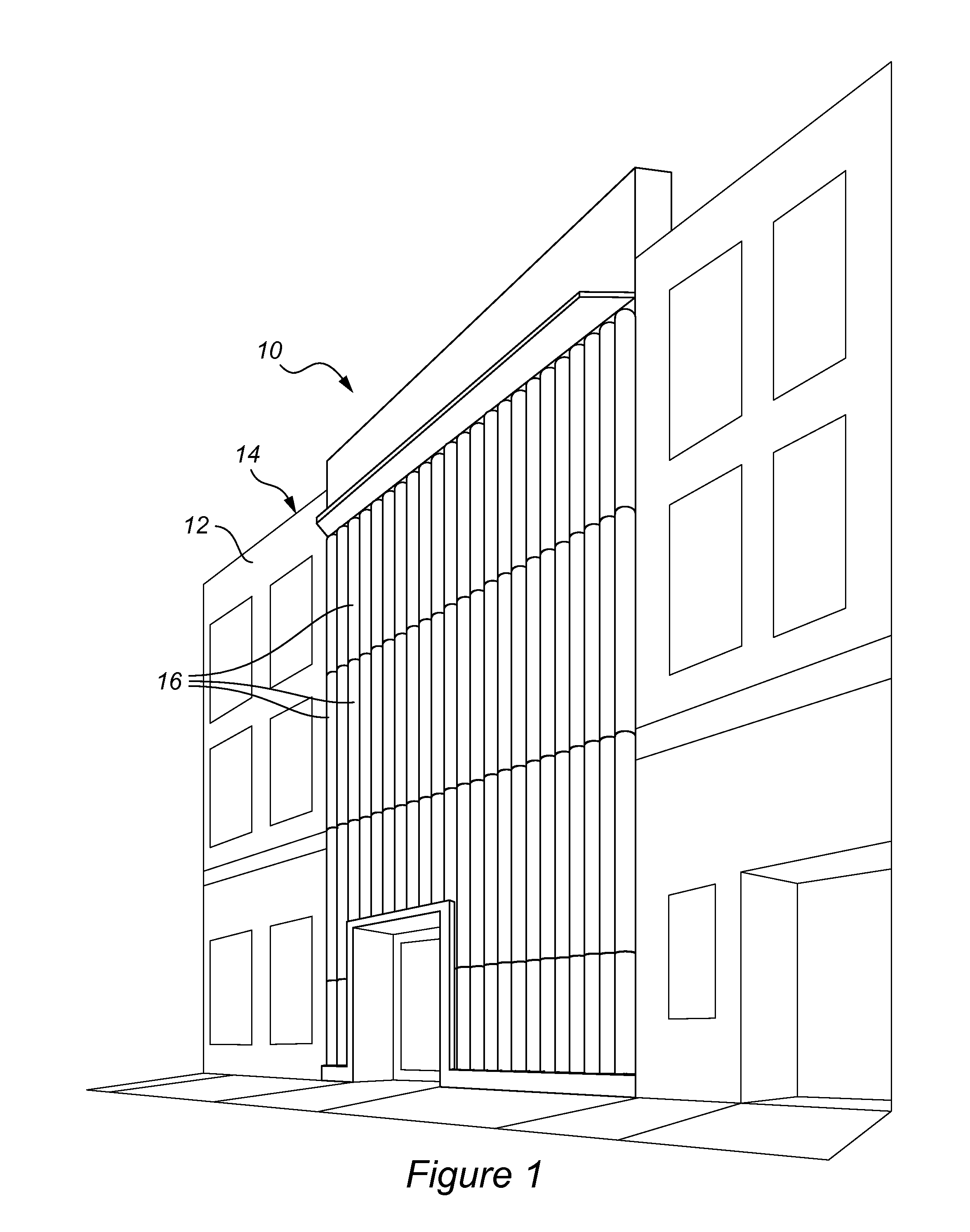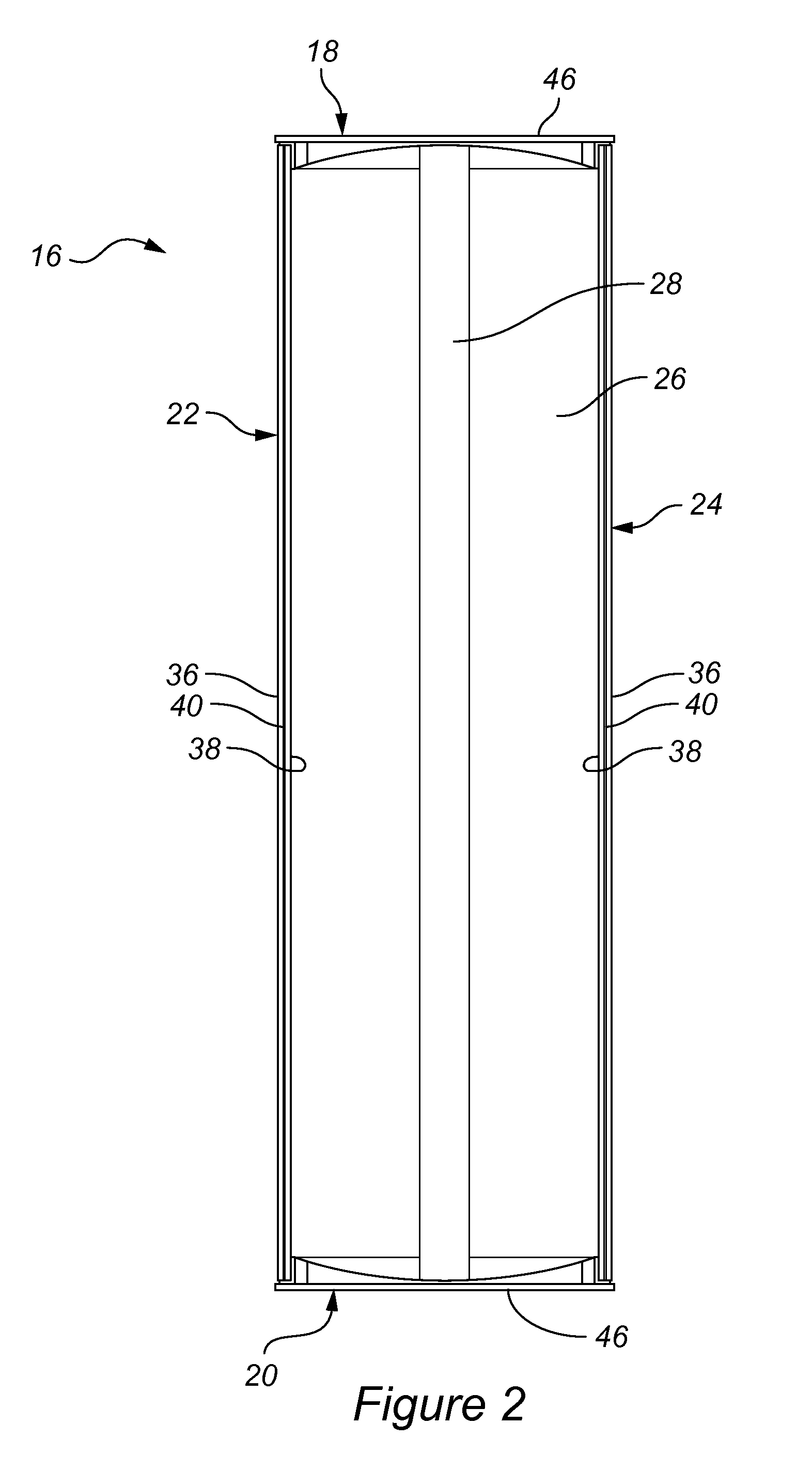Modular, self supporting exterior enclosure system with insulating, evacuated tubes having solar collector rods
a solar collector and module technology, applied in the direction of solar radiation prevention, heat collector mounting/support, light and heating apparatus, etc., can solve the problems of increasing heating and cooling requirements, reducing the efficiency of solar energy generation, so as to reduce or eliminate conductive and convective heat transfer and eliminate solar heat loads
- Summary
- Abstract
- Description
- Claims
- Application Information
AI Technical Summary
Benefits of technology
Problems solved by technology
Method used
Image
Examples
Embodiment Construction
[0040]The following detailed description references the accompanying figures that illustrate the present inventive concept. The illustrations and description are intended to describe aspects of the present inventive concept in sufficient detail to enable those skilled in the art to practice the present inventive concept. Other components can be utilized and changes can be made without departing from the scope of the present inventive concept. The following detailed description is, therefore, not to be taken in a limiting sense. The scope of the present inventive concept is defined only by the appended claims, along with the full scope of equivalents to which such claims are entitled.
[0041]In this description, references to an “embodiment” or “embodiments” mean that the feature or features being referred to are included in at least one embodiment of the present inventive concept. Separate references to an “embodiment” or “embodiments” do not necessarily refer to the same embodiment a...
PUM
 Login to View More
Login to View More Abstract
Description
Claims
Application Information
 Login to View More
Login to View More - R&D
- Intellectual Property
- Life Sciences
- Materials
- Tech Scout
- Unparalleled Data Quality
- Higher Quality Content
- 60% Fewer Hallucinations
Browse by: Latest US Patents, China's latest patents, Technical Efficacy Thesaurus, Application Domain, Technology Topic, Popular Technical Reports.
© 2025 PatSnap. All rights reserved.Legal|Privacy policy|Modern Slavery Act Transparency Statement|Sitemap|About US| Contact US: help@patsnap.com



